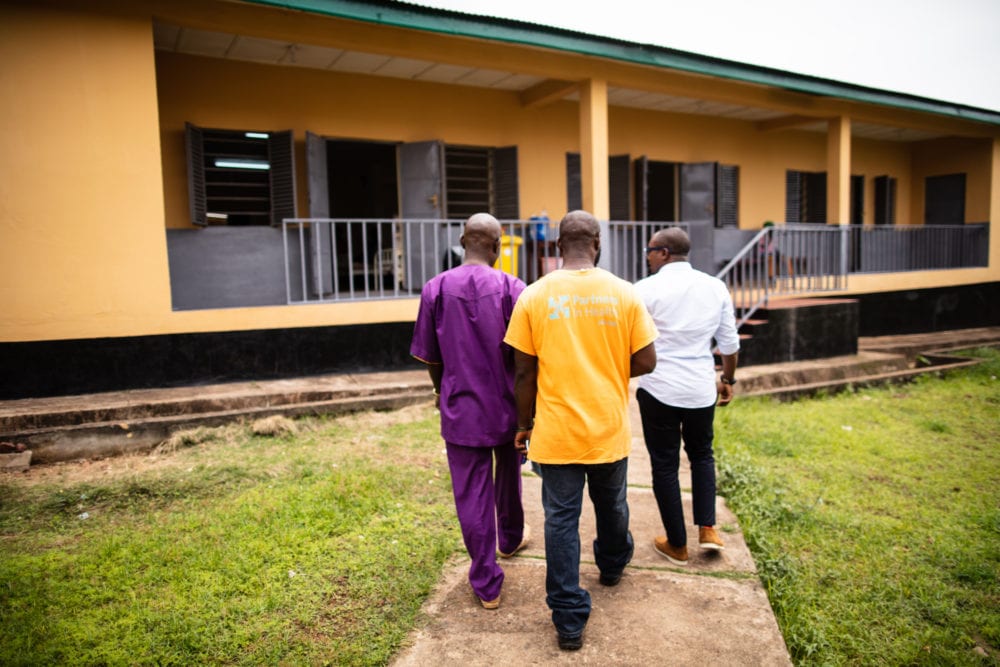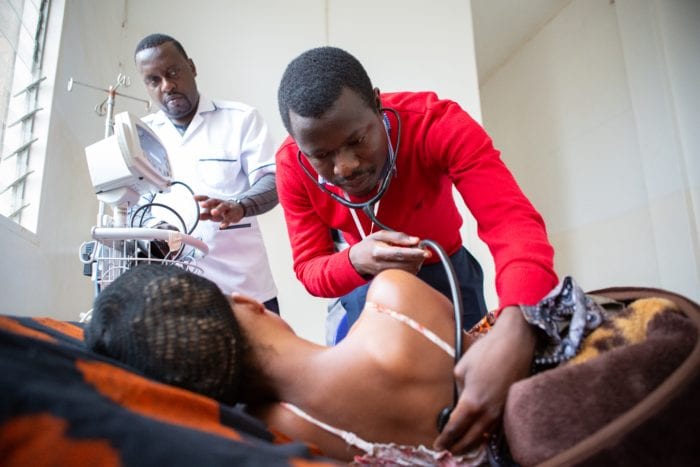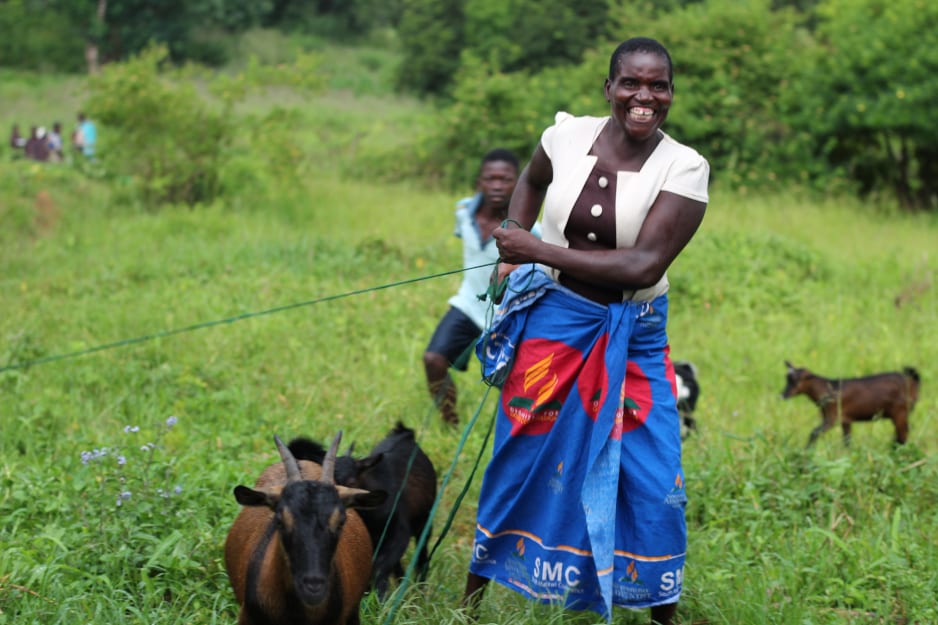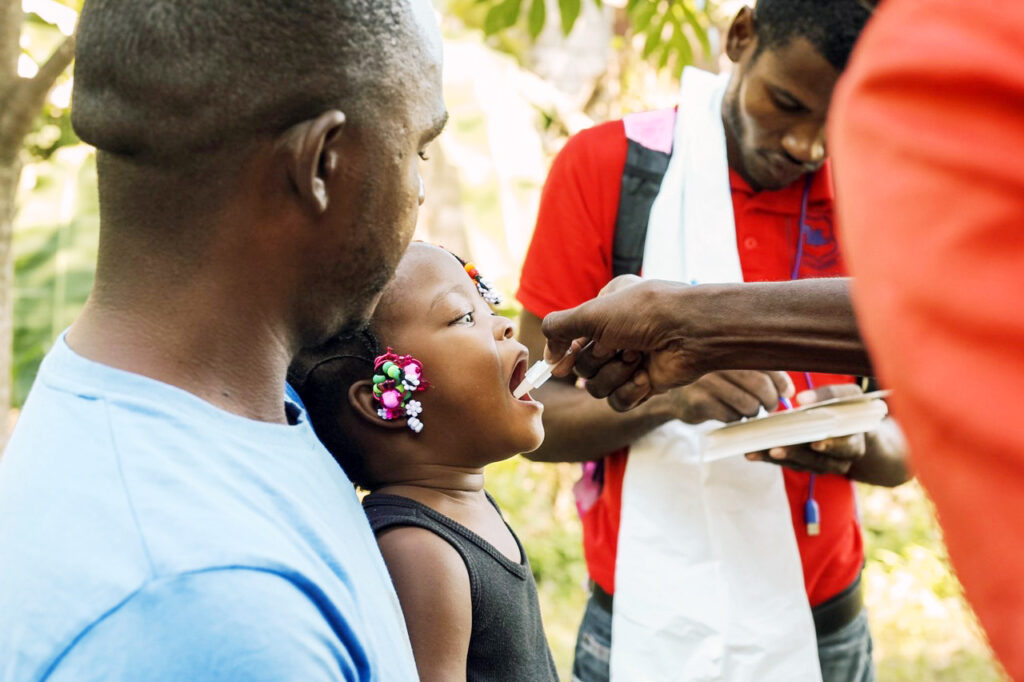PIH Canada’s submission to International Assistance Review
The Canadian government is undertaking a review of its international assistance programs and has invited feedback from individuals and Canadian development organizations. PIH Canada’s submission to the review is below. To read the government’s background document related to the review, see http://www.international.gc.ca/world-monde/assets/pdfs/iar-consultations-eai-eng.pdf
Global Affairs Canada – International Assistance Review
Submission from Partners In Health Canada
July 18, 2016
Thank you for this opportunity to contribute to the Government of Canada’s International Assistance Review. Partners In Health Canada is an international health organization relentlessly committed to improving the health of the poor and marginalized. Partners In Health (PIH) supports local governments to build capacity and works closely with impoverished communities to deliver high-quality health care, address the root causes of illness, train providers, advance research, and advocate for global policy change.
Our comments draw from PIH Canada’s experience over the past five years working in close collaboration with our field-based sister organizations in Haiti, Rwanda, Malawi, Liberia and Chiapas, Mexico; from a number of meetings with Canadian embassy and consular officials in Haiti and Rwanda, as well as discussions with Ottawa-based representatives of Global Affairs Canada (GAC); and from Partners In Health’s three decades of experience delivering care and advocating for the rights of those living in settings of poverty around the world.
We applaud the Government’s commitment to refocus attention on helping the poorest and most vulnerable. To the extent that PIH has had success in proving it is possible to deliver high-quality care in settings of poverty in support of national capacities and institutions, and has been able to influence global health policy as a result, we hope we are well-positioned to comment on ways in which Canada’s efforts might be translated into even stronger outcomes. Of particular note, PIH works in three of the bottom five countries with the worst maternal mortality statistics in the world: Lesotho, Liberia, and Sierra Leone. PIH has also established four aspirational clinical goals that we seek to achieve in all districts where we work, three of them being zero preventable maternal deaths in childbirth; zero mother-to-child transmission of HIV; and zero under-five deaths due to malnutrition. Given the strong overlap in these areas with Global Affairs Canada’s existing international assistance priorities, we are especially appreciative of the opportunity to share our thoughts.
Our submission will focus on three sections identified within the International Assistance Review discussion paper: Renewing Canada’s International Assistance; Health and Rights of Women and Children; and Delivering Results.
Renewing Canada’s International Assistance
Improving the health of the poorest and most vulnerable should remain the cornerstone of Canada’s international assistance effort. This should be done through continued engagement with multilateral organizations and stakeholders as well as bilateral and Canadian partners. Organizations such as the Global Fund to Fight AIDS, Tuberculosis and Malaria have had a transformative effect on the global health landscape by mobilizing many partners towards a common goal and creating the scale possible to show real and measurable impact over time, which in turn drives further investments. We are pleased that Canada’s leadership related to the Global Fund replenishment and ongoing support of the Fund has earned well-deserved praise from inside and outside Canada’s borders. We encourage Canada to work with the Global Fund to ensure the Fund’s priorities are equally focussed on the poorest and most vulnerable, who often live in remote and rural settings. Targeting these hardest-to-reach populations and achieving the Fund’s objectives will require a highly systemic, coordinated and patient-oriented approach to overcome the long distances from care and pervasive poverty in which many patients live. Use of funds from donor countries should promote delivery improvements that facilitate greater access to primary care services as a means of achieving the Fund’s core objectives for all. And, in addition to increasing access, improving the quality and delivery of care with and through local and national institutions should remain a key priority. These are critical investments that will have far-reaching benefits.
The flexibility offered through Canada’s bilateral aid programs, meanwhile, can have a dramatic impact on the health of marginalized populations. In this context, we believe the work of Global Affairs Canada can be made more effective through stronger leadership and attention paid in the international assistance framework to one of Canada’s most fundamental values domestically: that being, a belief in the necessity and achievability of comprehensive and widely accessible public sector health care to serve as a safety net for the most vulnerable members of society. This is very much in the spirit of the principle of “localization”, which was a cornerstone of the recent World Humanitarian Summit and is a principle to be consistently applied in both so-called humanitarian and development contexts.
In line with the Review objective “to ensure our international assistance policy, funding and delivery frameworks are relevant and effective”, the philosophical shift we are seeking would position stronger Canadian government support of partner country public sector capacity building and accompanying efforts to move towards universal health coverage as key principles of Canada’s aid strategy. Such a policy, when implemented well and with accountability and transparency measures in place, does not foster dependency on foreign assistance as is sometimes argued, but rather creates the necessary conditions for recipient countries to eventually stand on their own, while also immediately saving lives and revitalizing communities in contexts where the poorest and most vulnerable would otherwise have no access to effective health care. Canadian diplomatic staff in-country with responsibilities in the health sector should be encouraged, wherever possible, to visit areas where the poorest and most vulnerable live and engage with local providers in order to develop a stronger appreciation for the contexts in which Canadian aid policy needs to be implemented. The development of sub-national initiatives which strengthen services at the rural periphery while ensuring appropriate linkage to the national level is also a critical area, particularly in rural areas within fragmented and decentralized health systems.
In many contexts where PIH works, neglected public sector institutions are the only option for the poor, despite that fact that due to lack of human and financial resources, often very little health care is actually delivered. As stated by Drs. Joia Mukherjee and Regan Marsh, both of Partners In Health: “Lacking human resources and materials, the health systems in the world’s poorest countries are unable to provide basic care. The populations know this from their experiences seeking care and consistently facing bad outcomes—from high maternal death rates, to low life expectancy. Thus, public clinics in the world’s poorest countries are empty; they are underutilized even where the disease burden is highest.”
Underutilization, then, does not result from a lack of public health education or health provider training programs, or insufficient demand for services or a lack of public knowledge about the location of clinics or hospitals (as was suggested to us by one experienced Canadian civil servant, in-country); nor can any initiatives in these areas begin to address underutilization unless accompanied by deliberate system-level improvements. These system level improvements necessarily must include leveraging of investments in infrastructure as well as other critical program design elements related to the transfer of technical expertise and generation of new knowledge. While the challenges associated with moving towards well-functioning public sector health institutions may be lengthy and will involve working directly with partner governments in new ways – including more flexible support of public sector health workforces and capacity building – this is exactly the area in which Canada should be leading as an expression of fundamental Canadian and human rights values.
The idea of access to health care as a human right, ostensibly delivered through the public sector, is reflected in the preamble to the Constitution of the World Health Organization. In settings of poverty, the fulfillment of this right is no less important an objective and no less worth pursuing to its fullest extent than in Canada or in other developed countries; rather, we would argue it is especially critical in these contexts since good health facilitates economic development, education and gender equity. Only with a well-functioning public sector health system will international assistance investment in other areas show proper impact. To the extent that public sector health systems are lacking, progress on other development indicators will be severely hampered.
Health and Rights of Women and Children
We are encouraged by Canada’s commitment to a feminist approach and support for the gender equality goal of the 2030 Agenda, including the sexual and reproductive health and rights of women and girls. With respect to maternal, newborn and child health, the recognition that “a more comprehensive approach is required” is also a positive step. There is no questioning that upstream factors including adolescent pregnancy, gender violence, women’s lack of decision making power and the unmet need for family planning are all deserving of Canada’s attention and are areas where Canadian expertise can play an important role, including scaling up of HPV vaccination.
That said, we would submit that in the contexts in which the poorest and most vulnerable live, the root cause of maternal and child mortality is most often weak or non-existent health systems. The lack of availability of care undermines women’s decision-making power; when care is available and supportive systems are put in place, women’s power is uplifted. In our experience, an approach that prioritizes health system strengthening (HSS) and engages civil society partners whose work ties into broader public sector HSS efforts, working in tandem with addressing upstream challenges, is the most effective way of safeguarding the rights of women and girls immediately and over the long term.
Wherever PIH has worked – from Haiti to Lesotho, from Malawi to Rwanda, from Liberia to Sierra Leone – maternal mortality has always been associated with weak health systems. Deficits are routinely seen across four areas: a dearth of well-trained and fairly compensated health professionals, including but not limited to physicians, nurses and midwives; poor physical infrastructure, including non-existent or dilapidated hospitals and health centers; inadequate supplies, including essential medications and basic equipment; and an insufficient commitment to (or appreciation of) the crucial role to be played by community health workers in providing a link from community-based care to clinics and hospitals.
Reducing maternal and child mortality requires improvements in all of these areas. Three pillars of strong maternal health – family planning, pre-natal care, and facility-based delivery – can best be addressed at different levels of the delivery platform. Simply promoting safer home-based delivery, even with trained birth attendants or midwives, does not adequately address hemorrhage, infection or obstructed labour, three leading causes of maternal mortality in developing country settings and all of which require emergency obstetrical care. Similarly, providing incentives for traditional birth attendants to accompany pregnant women to deliver in hospitals that do not have adequate staff, space or supplies, will merely transfer maternal mortality from community to the clinic, and so will have the unintended consequence of reinforcing cultural norms promoting home-based delivery. It is for these reasons that we believe reductions in maternal mortality should be a barometer for health system strengthening, and why HSS is itself a gender-equity issue.
PIH’s work has proven that dramatic improvements can be made even in the most remote settings by taking such a comprehensive approach. In Lesotho, PIH-trained and compensated women’s health workers to assist pregnant women in attending prenatal services and follow up on a birthing and post-partum plan. Strengthening the primary health care platform allowed women to receive quality prenatal care and identified high risk pregnancies. Qualified midwives were supported to perform deliveries and refer high risk or emergency cases. As a result of these measures, utilization of services and treatment of HIV and other diseases increased, while maternal mortality decreased dramatically. Similar work has been done in Malawi. In Rwanda, while much more needs to be done to strengthen the health care workforce, there has been great strides made in fully integrating maternal and child health into the primary health care system. Maternal mortality in Rwanda, once among the highest in the world after the genocide, has steadily decreased over the past decade using many of the principles outlined here, and PIH is proud to have played a role in making it happen.
When considering projects to advance the rights of women and girls, an integrated approach to women’s sexual and reproductive health, gender based violence, family planning as well as highly prevalent non-communicable diseases such as breast and cervical cancer in resource limited settings should be central to Canada’s approach to women’s health. We strongly encourage Global Affairs Canada, as a matter of policy, to prioritize those initiatives that integrate prevention and care. Upstream programs should go hand-in-hand with downstream service delivery for those in need of care. In cases of gender-based violence, for example, women are re-victimized if after sexual assault they do not have access to medical care to prevent unwanted pregnancy or sexually transmitted infection, or to psychosocial counselling and community-based supports. Prevention and education sensitization for men and strengthening the responsiveness of police and judicial systems are integral to a comprehensive approach, but they do little to protect women’s rights when care is not available due to weak health systems.
In 2014, PIH Canada launched what we believe to be the first comprehensive gender-based violence project in Haiti integrating prevention and care across a wide geographical territory. The project involves community health workers, women’s health agents and community-based women’s organizations, all of whom, when appropriate, link patients to facility-based medical and psychosocial care delivered by specially trained physicians, nurses, and social workers. The project can be carried out successfully across multiple sites because years of health system strengthening efforts within the PIH catchment area have created a functioning primary care platform, which is in turn being further strengthened by project funds. Given that we are only two years into the project, it is difficult to assess impact in terms of increased awareness of gender-based violence among the general population, or decreased incidence of sexual or physical assault. What we do know from experience is that we are continuing to see an increasing caseload of GBV cases at project sites not necessarily because incidence is rising, but because women who have been victims of sexual or physical assault (and those who support them) are learning that compassionate, dignified and effective care is available.
Delivering Results
As outlined in the Discussion Paper, the International Assistance Review presents an opportunity to re-examine assumptions that shape Canada’s foreign aid policies. One approach to improving results, we suggest, is to consider challenges of health care delivery through the prism provided by the actual lived experience of individuals and communities Canada’s aid is intended to benefit. One case from PIH’s work in Malawi may be illustrative as an example.
In 2007, at the request of the Malawi Ministry of Health, PIH began work in one of the poorest and most remote areas in rural Neno district. The area was served in part by a network of private health centers run by an international faith-based NGO. At one underused clinic desperately in need of support, PIH pledged to renovate and upgrade staff housing, install a water tank and solar panels, do routine maintenance and provide financial support for drugs and human resources. In return for these investments, PIH requested that patient user fees be dropped. After the arrangement was put in place, the patient load at the clinic increased almost overnight to between 200 and 300 patients a day. Unfortunately, the arrangement didn’t last. In 2013, in the face of minor funding cutbacks from PIH and the district – and against the desperate pleas of PIH’s staff in Malawi, who understood the socioeconomic conditions faced by populations being served – the NGO running the health center reinstituted user fees. The user fee amount was insignificant in the context of the overall clinic budget; indeed, it was nominal by any standard except the only measure that mattered – the disposable income of families served by the clinic. Soon, the clinic caseload dropped to 10 patients a day. Health care was in effect once again closed to the poor, and many deaths resulted.
In 2016, we thankfully have better news to report. After a sustained fundraising push, in April of this year, PIH finished completion and opened the doors of a new public sector health clinic in the same community in partnership with the Ministry of Health. There are stockpiles of medications, paid health professionals and no user fees. Patient caseloads are again skyrocketing. The story is an example of the kind of flexibility of approach that is needed if Canada – and other countries investing in this work – are to truly make our aid dollars work for the most vulnerable. For PIH, the approach is based in a philosophy of accompaniment, which includes support of public sector institutions, is deeply entrenched in the community, directly addresses needs as expressed by patients, and above all is predicated on a long-term commitment to areas we serve.
The model presents an opportunity to think about delivery systems that are themselves radically innovative, in that they reject traditional assumptions about what is ‘sustainable’ and ‘cost-effective’. Innovation in delivery, after all, is what is required above all else. Whether we are speaking of education of health professionals or lifesaving medications or new technologies, in the global path from Discovery to Development to Delivery, it is our shortcomings in the third D – Delivery – that are the greatest roadblocks to health equity for resource-poor settings. Innovation, we submit, is fostered in part by being resolute on what it is we are trying to achieve – improved health and alleviation of poverty – rather than looking for new paths for their own sake. Catastrophic illness in often the tipping point from poverty to destitution when accessible and effective health care does not exist, and making a commitment to mitigating catastrophic illness by facilitating access to care for those living in poverty should be a priority for all.
We also submit that what is most ‘cost-effective’ in terms of health investments are systems that are actually effective in providing good health care and facilitating health gains. From HIV to TB to maternal health, system-level improvements in quality and accessibility that increase utilization and retention are far more cost effective than limited, piecemeal interventions when cost is considered over longer time horizons. To the extent that Canadian international aid can prioritize system-level investments and factor changes over time into project evaluations, this would be a positive step for the effectiveness of aid.
Regarding the question of Canada’s development partners, we would encourage prioritizing engagement of partners that are entrenched in communities where they work with long-standing relationships, and who work not just in accordance with public sector priorities, but to capacitate public sector institutions. This would apply to both local partners and Canadian organizations working with local partners. Models and expertise are certainly transferable, but long-term commitments to a region or country are the best way to measure capacity for sustainable and effective change.



